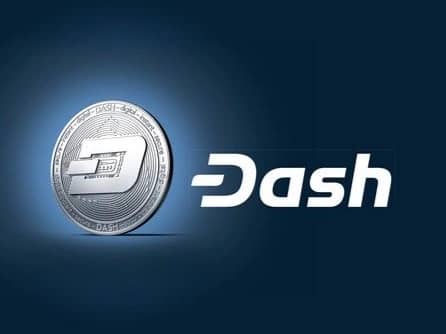Dash
Dash는 중앙 권한에 의존하지 않고 빠르고 저렴한 글로벌 결제를 가능하게 하는 디지털 통화입니다. 암호화 보안을 갖춘 탈중앙화된 피어 투 피어 네트워크에서 작동하는 Dash는 온라인 및 일상적인 거래에 적합한 휴대성 있고 효율적인 결제 수단을 제공합니다. [1] [2]
개요
Dash는 사용자 접근성 및 확장성을 위해 설계된 결제 중심의 암호화폐입니다. 이 네트워크는 즉시 거래 확인, 이중 지출 방지 및 현금과 비슷한 선택적 개인 정보 보호 기능을 제공합니다. 2단계 구조를 통해 더 빠른 거래, 향상된 개인 정보 보호 및 인센티브가 부여된 전체 노드를 통한 자치 관리가 가능합니다. 비트코인을 기반으로 하지만 Dash는 최대 400MB 블록을 목표로 하는 맞춤형 오픈 소스 하드웨어를 사용하여 온체인 확장 기능을 포함합니다. [2]
기능
마스터노드
Dash는 전통적인 작업 증명 채굴을 넘어 네트워크를 지원하는 특수 서버인 마스터노드를 운영하는 사용자에게 보상합니다. 마스터노드는 거의 즉각적인 거래를 제공하는 InstantSend, 향상된 재정적 개인 정보 보호를 위한 CoinJoin, 51% 공격으로부터 보호하는 ChainLocks와 같은 서비스를 가능하게 합니다. 또한 블록 보조금의 20%를 프로젝트 개발에 투자하는 Dash의 거버넌스 및 재무 시스템을 지원합니다. 각 마스터노드에는 블록체인에서 서명된 메시지를 통해 증명된 1000 DASH가 필요합니다. 마스터노드를 운영하면 프로젝트 제안에 대한 투표권이 부여되고 보상은 블록당 배포되며 매년 7%씩 감소합니다. [3]
Evolution 마스터노드
Evolution 마스터노드 또는 EvoNode는 Dash 플랫폼 서비스를 지원하기 위해 설립된 특수 마스터노드입니다. 표준 마스터노드는 1000 DASH 담보가 필요하며 Dash Core 서비스만 제공합니다. EvoNode는 4000 DASH가 필요하며 Dash Core 및 플랫폼 서비스를 모두 호스팅합니다. EvoNode는 또한 4의 투표 가중치를 가지며 이러한 추가 기능을 지원하기 위해 더 높은 하드웨어 사양을 요구합니다. [3]
CoinJoin
CoinJoin은 Dash 보유량을 다른 사용자의 보유량과 혼합하여 재정적 개인 정보 보호를 향상시킵니다. 이 프로세스는 거래 입력을 표준 금액(0.001, 0.01, 0.1, 1 및 10 Dash)으로 나누고 마스터노드를 사용하여 이러한 입력을 최소 두 개 이상의 다른 입력과 단일 거래에서 결합하지만 자금은 사용자의 통제하에 유지됩니다. 거래는 사용자가 선택한 여러 라운드(2-16)에서 완료되며 각 라운드마다 익명성이 더해집니다. 이 프로세스는 백그라운드에서 작동하며 사용자의 개입이 필요 없으며 거래는 남은 입력을 충당하기 위해 반올림됩니다. 거래 수수료 [3]
InstantSend
InstantSend는 Dash의 2계층 마스터노드 네트워크를 활용하여 탈중앙화된 암호화폐에서 일반적인 거래 확인 지연을 줄입니다. 15분에서 1시간이 걸릴 수 있는 여러 블록이 필요한 전통적인 시스템과 달리 마스터노드는 거래를 즉시 검증하기 위해 투표 정족수를 형성합니다. 검증되면 마스터노드는 거래 입력을 잠그고 향후 블록에 포함되도록 하여 이중 지출을 방지합니다. 이 프로세스를 통해 Dash는 중앙 집중식 제어에 의존하지 않고 거의 즉각적인 거래를 제공하여 POS 결제에 대한 신용 카드 속도와 비슷하게 만듭니다. [3]
ChainLocks
ChainLocks는 블록체인 재구성 이벤트의 위험을 제거하여 Dash 네트워크의 지불 확실성을 향상시킵니다. InstantSend와 함께 작동하는 ChainLocks를 통해 전통적으로 재구성 위험을 해결하지만 거래에 시간과 복잡성을 추가하는 여러 확인을 기다리지 않고도 지불을 즉시 수락할 수 있습니다. 이 기능은 직접적이고 즉각적인 거래 보장을 제공하여 보안과 사용자 경험을 향상시킵니다. [3]
Sporks
Sporks는 즉각적인 시행 없이 업데이트를 릴리스할 수 있는 Dash 네트워크 기능입니다. “RC3” 업데이트 관련 문제 이후 2014년에 도입된 이 다단계 활성화는 기존 하드 포크보다 원활한 전환을 제공하고 실시간 테스트 데이터 수집을 가능하게 합니다. 원래는 “소프트 포킹”으로 의도되었지만 커뮤니티는 “spork”라는 이름을 채택했습니다. Dash Core v21.0부터 spork는 이제 테스트 네트워크로 제한되며 메인넷 spork 값은 중앙 집중화 위험을 줄이기 위해 고정되었습니다. [3]
